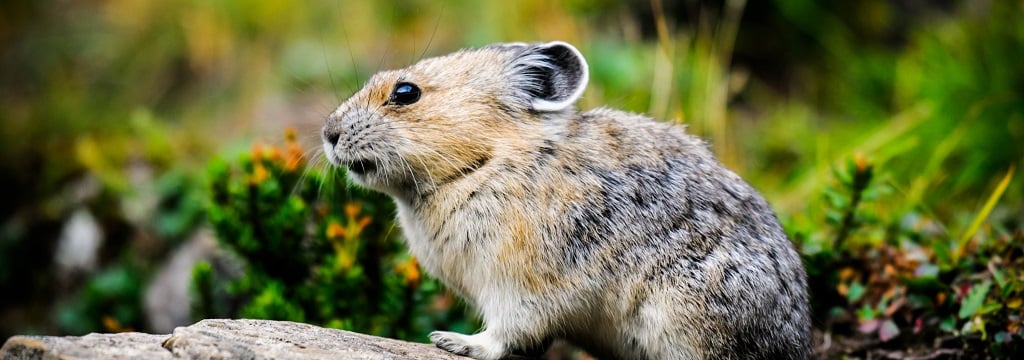What technologies can be used to help wild animals?

There are numerous technologies that we can employ to learn about the lives of animals in the wild. Many of the data collection and remote sensing methods have been around for decades and are relatively low tech but still very powerful for capturing data. The major advances in recent years have come from improvements in machine learning and increases in processing capacity. That is, not mainly in the amount of data we can gather, but in the insights we can extract from that data.
We can now process massive amounts of data from cameras, acoustic sensors, thermal imaging, eDNA samples, and other sources to gain new types of insights and to observe things that were never possible before, such as identifying individual insects and recognizing them later. It is also now possible to model how multiple populations of animals in a habitat affect the presence and numbers of each other.
Analysis of the collected data can give us information about the presence of species in an area, their numbers, how the distribution of different groups of animals changes over time, and the factors that contribute to it. In particular, it can tell us about factors like the mortality, health, and behavior of animals within a population.This gives us information we need in order to design programs to help animals. Here we’ll give a brief overview of a few of these technologies for capturing data in natural environments.
Camera traps
Camera traps are motion sensing cameras that are attached to trees or placed elsewhere in a natural habitat. They can take photographs periodically or record video during specified times. Camera traps can also produce continuous feeds, although processing that much data is extremely resource-intensive.
Information can be gathered about the location and numbers of animals as well as their behaviors and physical condition. The detailed and continuously updating information can help us monitor the wellbeing of animals in the wild and the factors that affect it, such as rapidly growing populations, the presence of other species, the limitations of resources in the area and how the animals use those resources.
LIDAR
Light detection and ranging (LIDAR) technology produces three-dimensional images of landscapes (it is therefore sometimes referred to as “3-D laser scanning”). LIDAR deployed on the ground or in an aerial vehicle can produce high resolution images that show the structure of a habitat down to the position of leaves on branches.
When used over a large area, it can not only detect species abundance and distribution, it can capture physical features of the habitat that affect these things. The data can help us to understand the resource needs of animals in the wild and how adequately they are being met.
Thermal imaging
Thermal imaging uses infrared cameras to capture the heat signatures of animals in an area. It can determine the presence of particular types of animals and their population numbers, including visually cryptic animals, that is, those that are very difficult to detect because they camouflage themselves.
One of the most powerful things thermal imaging can do is to detect physical stress, which can be due to an injury or illness or due to fear or another type of threat response. Local injuries can be identified by increased heat in the affected area due to inflammation. Reduced heat on the surface of the skin indicates that blood is rushing to the internal organs, possibly because the fight or flight response has been triggered.
Acoustical data
Analyzing the sounds of animals and the environments they live in can provide information about what their lives are like and their changing circumstances. Sound data can be collected in place of or in addition to physical and visual data. Field recordings include “infrasonic” and “ultrasonic” sounds that are outside the human range of hearing.
Some of these are sounds that other animals can hear and react to, and others give us information about the areas where they are located. There are microphones that work in water as well on land and in the sky. We can collect sound data that indicate health, interactions among animals, and changing conditions in a habitat. This research, in combination with work interpreting the relation between the kind of vocalizations and other sounds animals produce and their state of wellbeing, can be very useful for welfare evaluations.
eDNA
Environmental DNA (eDNA) is a way of collecting genetic material in natural environments such as fur, feathers, feces, and scales of fishes in aquatic environments. Collecting and analyzing eDNA samples is a non-invasive method that does not require interacting with the animals that are being studied, so avoids any negative impact on them. We previously published an article about the advantages of eDNA data collection that goes into more detail.
Examining the DNA gives us information about the diet, health, and age of an animal. It can give us information, for example, about whether an animal is suffering from a certain disease. Taking samples over an area can also help us estimate the types and numbers of animals in that area. This is a labor-intensive method that is not practical to use for detailed information over a wide area. It gives more of a snapshot of the animals in a particular area at a particular time. Citizen scientists often help with collecting the genetic material and recording where it was gathered.
This list highlights just a few of the current technologies that can be used to gather data. Continual improvements in data processing power will improve our ability to use the data to gain insights about the welfare of animals, and this knowledge will make it possible to help them effectively, for example by treating their illnesses or providing water during local droughts. As awareness of the plight of wild animals increases, the use of these technologies will expand, giving us practical information about how to improve the wellbeing of the individuals in a habitat.